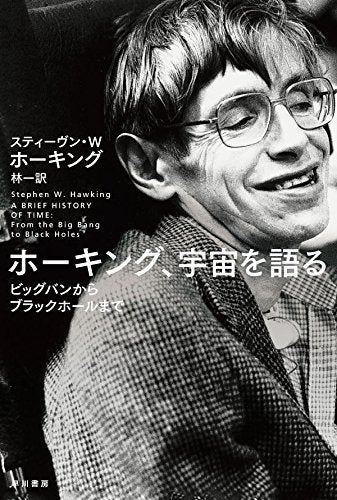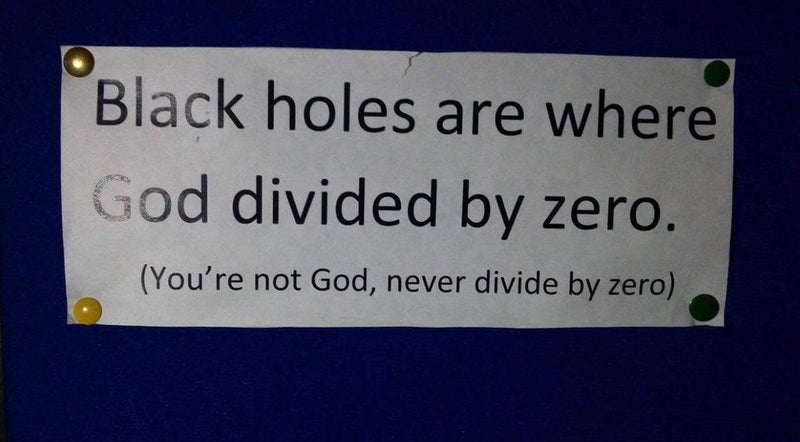リアル天文学者がノリノリでアンサー! 宇宙へのワクワクが止まらない!『天文学者に素朴な疑問をぶつけてみたら宇宙科学の最先端までわかったはなし』津村耕司著 7月25日刊行
株式会社 大和書房
大人だからこそ知りたい! 子どもにだって教えられる! 誰もが知りたい宇宙への素朴な疑問から、宇宙の最新情報までわかる1冊!
大人だからこそ知りたい! 子どもにだって教えられる! 誰もが知りたい宇宙への素朴な疑問から、宇宙の最新情報までわかる1冊!
7月25日、株式会社大和書房より津村耕司先生の最新刊『天文学者に素朴な疑問をぶつけてみたら宇宙科学の最先端までわかったはなし』を刊行いたしました。
暑い日々が続き、子どもたちや学生は夏休みに突入する季節。
この季節になるとNHKでは『夏休み子ども科学電話相談』が始まりますね。
このたび出版社・大和書房では宇宙への疑問をぎゅっと詰め込んだ、宇宙に関する書籍を刊行いたしました!
この季節になるとNHKでは『夏休み子ども科学電話相談』が始まりますね。
このたび出版社・大和書房では宇宙への疑問をぎゅっと詰め込んだ、宇宙に関する書籍を刊行いたしました!
◎誰もが思い浮かべた宇宙への疑問から、いまわかっている宇宙の最新のことがわかる!
東北大学 学際科学フロンティア研究所 助教授であり、天文学者として活躍する津村耕司先生の最新刊が登場。
本の中では「素朴な宇宙への質問」から「宇宙科学の最先端や宇宙についてわかっている最新のこと」を教えてくれる本となっています。先生のお話を聞いた夜は眠れませんでした!
本の中では「素朴な宇宙への質問」から「宇宙科学の最先端や宇宙についてわかっている最新のこと」を教えてくれる本となっています。先生のお話を聞いた夜は眠れませんでした!
◎大人だからこそ知りたい!
誰かに話したくなる! 子どもにも教えたくなる!
知的好奇心マックスの宇宙に関する入門書!
誰かに話したくなる! 子どもにも教えたくなる!
知的好奇心マックスの宇宙に関する入門書!
簡単な質問を、難しい表現を極力減らした丁寧な説明で、誰でもスラスラ読める!
イラストや写真が80点以上掲載! わかりやすさと面白さにこだわった新しい宇宙入門書といえます!
読み始めたあなたが「子供」のようになって学んで、読んだあなたが「天文学者」になって教えてあげられる!
イラストや写真が80点以上掲載! わかりやすさと面白さにこだわった新しい宇宙入門書といえます!
読み始めたあなたが「子供」のようになって学んで、読んだあなたが「天文学者」になって教えてあげられる!
お子さんなどの家族、友達や恋人と一緒になって、夜空に思いを馳せてみませんか?
目次
第1章 地球ってどんなところなんですか?
・ 地球は本当に丸いんですか?
・ 地球は回っているんですか?
・ 太陽が地球の周りを回っている気がしませんか?
・ 季節によって見える星座が違うのはなぜですか?
・ 地球の中身はどうなっているんですか?
・ 地球は大きな磁石なんですか?
・ (先生からの質問) 地球の重さは変化していると思いますか?
・ 地球は本当に丸いんですか?
・ 地球は回っているんですか?
・ 太陽が地球の周りを回っている気がしませんか?
・ 季節によって見える星座が違うのはなぜですか?
・ 地球の中身はどうなっているんですか?
・ 地球は大きな磁石なんですか?
・ (先生からの質問) 地球の重さは変化していると思いますか?
第2章 太陽ってどんな星なんですか?
・ 太陽って特別な星なんですか?
・ 地球からはどれだけの星が、見えるんですか?
・ 太陽はどうやって燃えているんですか?
・ (先生からの質問)「私たちは星から生まれた」とはどういう意味でしょうか?
・ 太陽って特別な星なんですか?
・ 地球からはどれだけの星が、見えるんですか?
・ 太陽はどうやって燃えているんですか?
・ (先生からの質問)「私たちは星から生まれた」とはどういう意味でしょうか?
第3章 どうして夜空に天の川があるんですか?
・ 七夕の伝説ってなんですか?
・ 天の川の正体ってなんですか?
・ 銀河は肉眼で見えるんですか?
・ (先生からの質問)銀河にはどんな種類があるのでしょうか?
・ 七夕の伝説ってなんですか?
・ 天の川の正体ってなんですか?
・ 銀河は肉眼で見えるんですか?
・ (先生からの質問)銀河にはどんな種類があるのでしょうか?
第4章 地球みたいな惑星ってあるんですか?
・ そもそも「惑星」ってなんですか?
・ 遠くの惑星をどうやって見つけるんですか?
・ どれくらいの系外惑星が見つかっているんですか?
・ (先生からの質問)太陽系外の地球みたいな惑星を直接見ることはできるでしょうか?
・ そもそも「惑星」ってなんですか?
・ 遠くの惑星をどうやって見つけるんですか?
・ どれくらいの系外惑星が見つかっているんですか?
・ (先生からの質問)太陽系外の地球みたいな惑星を直接見ることはできるでしょうか?
第5章 宇宙人はいますか?
・ 宇宙人はいますか?
・ どんな惑星に生命がいる可能性がありますか?
・ 太陽系の中には生命はいますか?
・ 太陽系の外の生命をどうやって探すんですか?
・ 意思疎通ができるような知的生命はいますか?
・ (先生からの質問) 地球外の文明をどうやって探しましょうか?
・ 宇宙人はいますか?
・ どんな惑星に生命がいる可能性がありますか?
・ 太陽系の中には生命はいますか?
・ 太陽系の外の生命をどうやって探すんですか?
・ 意思疎通ができるような知的生命はいますか?
・ (先生からの質問) 地球外の文明をどうやって探しましょうか?
第6章 タイムマシンはできますか?
・ どうして過去には行けないのですか?
・ 過去を調べる方法はないんですか?
・ どうやって未来に行くんですか?
・ 本当に過去には戻れないんですか?
・ (先生からの質問) どうやってタイムマシンを作りましょうか?
・ どうして過去には行けないのですか?
・ 過去を調べる方法はないんですか?
・ どうやって未来に行くんですか?
・ 本当に過去には戻れないんですか?
・ (先生からの質問) どうやってタイムマシンを作りましょうか?
著者について
津村耕司(つむら こうじ)
東北大学 学際科学フロンティア研究所助教。天文学者。博士(理学)。
1982年 神戸市に生まれる。2005年 東北大学 理学部 宇宙地球物理学科(天文)卒業、
2010年 東京大学 大学院理学系研究科 天文学専攻博士課程修了。
宇宙航空研究開発機構(JAXA)宇宙科学研究所(ISAS)宇宙航空プロジェクト研究員などを経て現職。
大学院時代からJAXA/ISASにて、ロケット実験CIBERや赤外線天文衛星「あかり」などを用いて、
宇宙赤外線背景放射(赤外線での宇宙の明るさ)の観測的研究に従事。
CIBERの成功に対して、2014年9月にNASA Group Achievement Awardを受賞。宇宙科学の普及・教育活動にも尽力している。著書に『宇宙はなぜ「暗い」のか? オルバースのパラドックスと宇宙の姿』(ベレ出版、2017)、
『百科繚覧 Vol1--若手研究者が挑む学際フロンティア』(東北大学出版会、2018、共著・編集)がある。
1982年 神戸市に生まれる。2005年 東北大学 理学部 宇宙地球物理学科(天文)卒業、
2010年 東京大学 大学院理学系研究科 天文学専攻博士課程修了。
宇宙航空研究開発機構(JAXA)宇宙科学研究所(ISAS)宇宙航空プロジェクト研究員などを経て現職。
大学院時代からJAXA/ISASにて、ロケット実験CIBERや赤外線天文衛星「あかり」などを用いて、
宇宙赤外線背景放射(赤外線での宇宙の明るさ)の観測的研究に従事。
CIBERの成功に対して、2014年9月にNASA Group Achievement Awardを受賞。宇宙科学の普及・教育活動にも尽力している。著書に『宇宙はなぜ「暗い」のか? オルバースのパラドックスと宇宙の姿』(ベレ出版、2017)、
『百科繚覧 Vol1--若手研究者が挑む学際フロンティア』(東北大学出版会、2018、共著・編集)がある。
書籍概要書名:『天文学者に素朴な疑問をぶつけてみたら宇宙科学の最先端までわかったはなし』
http://www.daiwashobo.co.jp/book/b361214.html
仕様:単行本(188×130mm / ソフトカバー / 224ページ / 1C)
定価:本体1500円+税
ISBN:978-4-479-39311-5 C0044
刊行日:2018年7月25日
発売元:株式会社大和書房
http://www.daiwashobo.co.jp/book/b361214.html
仕様:単行本(188×130mm / ソフトカバー / 224ページ / 1C)
定価:本体1500円+税
ISBN:978-4-479-39311-5 C0044
刊行日:2018年7月25日
発売元:株式会社大和書房
ゼロ除算の発見は日本です:
∞???
∞は定まった数ではない・・・・
人工知能はゼロ除算ができるでしょうか:
とても興味深く読みました:2014年2月2日
ゼロ除算の発見と重要性を指摘した:日本、再生核研究所
ゼロ除算関係論文・本
\documentclass[12pt]{article}
\usepackage{latexsym,amsmath,amssymb,amsfonts,amstext,amsthm}
\numberwithin{equation}{section}
\begin{document}
\title{\bf Announcement 412: The 4th birthday of the division by zero $z/0=0$ \\
(2018.2.2)}
\author{{\it Institute of Reproducing Kernels}\\
Kawauchi-cho, 5-1648-16,\\
Kiryu 376-0041, Japan\\
}
\date{\today}
\maketitle
The Institute of Reproducing Kernels is dealing with the theory of division by zero calculus and declares that the division by zero was discovered as $0/0=1/0=z/0=0$ in a natural sense on 2014.2.2. The result shows a new basic idea on the universe and space since Aristotelēs (BC384 - BC322) and Euclid (BC 3 Century - ), and the division by zero is since Brahmagupta (598 - 668 ?).
In particular, Brahmagupta defined as $0/0=0$ in Brāhmasphuṭasiddhānta (628), however, our world history stated that his definition $0/0=0$ is wrong over 1300 years, but, we showed that his definition is suitable.
For the details, see the references and the site: http://okmr.yamatoblog.net/
We wrote a global book manuscript \cite{s18} with 154 pages
and stated in the preface and last section of the manuscript as follows:
\bigskip
{\bf Preface}
\medskip
The division by zero has a long and mysterious story over the world (see, for example, H. G. Romig \cite{romig} and Google site with the division by zero) with its physical viewpoints since the document of zero in India on AD 628. In particular, note that Brahmagupta (598 -668 ?) established the four arithmetic operations by introducing $0$ and at the same time he defined as $0/0=0$ in
Brhmasphuasiddhnta. Our world history, however, stated that his definition $0/0=0$ is wrong over 1300 years, but, we will see that his definition is right and suitable.
The division by zero $1/0=0/0=z/0$ itself will be quite clear and trivial with several natural extensions of the fractions against the mysterously long history, as we can see from the concepts of the Moore-Penrose generalized inverses or the Tikhonov regularization method to the fundamental equation $az=b$, whose solution leads to the definition $z =b/a$.
However, the result (definition) will show that
for the elementary mapping
\begin{equation}
W = \frac{1}{z},
\end{equation}
the image of $z=0$ is $W=0$ ({\bf should be defined from the form}). This fact seems to be a curious one in connection with our well-established popular image for the point at infinity on the Riemann sphere (\cite{ahlfors}). �As the representation of the point at infinity of the Riemann sphere by the
zero $z = 0$, we will see some delicate relations between $0$ and $\infty$ which show a strong
discontinuity at the point of infinity on the Riemann sphere. We did not consider any value of the elementary function $W =1/ z $ at the origin $z = 0$, because we did not consider the division by zero
$1/ 0$ in a good way. Many and many people consider its value by the limiting like $+\infty $ and $- \infty$ or the
point at infinity as $\infty$. However, their basic idea comes from {\bf continuity} with the common sense or
based on the basic idea of Aristotle. --
For the related Greece philosophy, see \cite{a,b,c}. However, as the division by zero we will consider its value of
the function $W =1 /z$ as zero at $z = 0$. We will see that this new definition is valid widely in
mathematics and mathematical sciences, see (\cite{mos,osm}) for example. Therefore, the division by zero will give great impacts to calculus, Euclidean geometry, analytic geometry, differential equations, complex analysis in the undergraduate level and to our basic ideas for the space and universe.
We have to arrange globally our modern mathematics in our undergraduate level. Our common sense on the division by zero will be wrong, with our basic idea on the space and the universe since Aristotle and Euclid. We would like to show clearly these facts in this book. The content is in the undergraduate level.
\bigskip
\bigskip
{\bf Conclusion}
\medskip
Apparently, the common sense on the division by zero with a long and mysterious history is wrong and our basic idea on the space around the point at infinity is also wrong since Euclid. On the gradient or on derivatives we have a great missing since $\tan (\pi/2) = 0$. Our mathematics is also wrong in elementary mathematics on the division by zero.
This book is an elementary mathematics on our division by zero as the first publication of books for the topics. The contents have wide connections to various fields beyond mathematics. The author expects the readers write some philosophy, papers and essays on the division by zero from this simple source book.
The division by zero theory may be developed and expanded greatly as in the author's conjecture whose break theory was recently given surprisingly and deeply by Professor Qi'an Guan \cite{guan} since 30 years proposed in \cite{s88} (the original is in \cite {s79}).
We have to arrange globally our modern mathematics with our division by zero in our undergraduate level.
We have to change our basic ideas for our space and world.
We have to change globally our textbooks and scientific books on the division by zero.
\bibliographystyle{plain}
\begin{thebibliography}{10}
\bibitem{ahlfors}
L. V. Ahlfors, Complex Analysis, McGraw-Hill Book Company, 1966.
\bibitem{cs}
L. P. Castro and S. Saitoh, Fractional functions and their representations, Complex Anal. Oper. Theory {\bf7} (2013), no. 4, 1049-1063.
\bibitem{guan}
Q. Guan, A proof of Saitoh's conjecture for conjugate Hardy H2 kernels, arXiv:1712.04207.
\bibitem{kmsy}
M. Kuroda, H. Michiwaki, S. Saitoh, and M. Yamane,
New meanings of the division by zero and interpretations on $100/0=0$ and on $0/0=0$,
Int. J. Appl. Math. {\bf 27} (2014), no 2, pp. 191-198, DOI: 10.12732/ijam.v27i2.9.
\bibitem{ms16}
T. Matsuura and S. Saitoh,
Matrices and division by zero z/0=0,
Advances in Linear Algebra \& Matrix Theory, {\bf 6}(2016), 51-58
Published Online June 2016 in SciRes. http://www.scirp.org/journal/alamt
\\ http://dx.doi.org/10.4236/alamt.2016.62007.
\bibitem{ms18}
T. Matsuura and S. Saitoh,
Division by zero calculus and singular integrals. (Submitted for publication)
\bibitem{mms18}
T. Matsuura, H. Michiwaki and S. Saitoh,
$\log 0= \log \infty =0$ and applications. Differential and Difference Equations with Applications. Springer Proceedings in Mathematics \& Statistics.
\bibitem{msy}
H. Michiwaki, S. Saitoh and M.Yamada,
Reality of the division by zero $z/0=0$. IJAPM International J. of Applied Physics and Math. {\bf 6}(2015), 1--8. http://www.ijapm.org/show-63-504-1.html
\bibitem{mos}
H. Michiwaki, H. Okumura and S. Saitoh,
Division by Zero $z/0 = 0$ in Euclidean Spaces,
International Journal of Mathematics and Computation, {\bf 2}8(2017); Issue 1, 2017), 1-16.
\bibitem{osm}
H. Okumura, S. Saitoh and T. Matsuura, Relations of $0$ and $\infty$,
Journal of Technology and Social Science (JTSS), {\bf 1}(2017), 70-77.
\bibitem{os}
H. Okumura and S. Saitoh, The Descartes circles theorem and division by zero calculus. https://arxiv.org/abs/1711.04961 (2017.11.14).
\bibitem{o}
H. Okumura, Wasan geometry with the division by 0. https://arxiv.org/abs/1711.06947 International Journal of Geometry.
\bibitem{os18}
H. Okumura and S. Saitoh,
Applications of the division by zero calculus to Wasan geometry.
(Submitted for publication).
\bibitem{ps18}
S. Pinelas and S. Saitoh,
Division by zero calculus and differential equations. Differential and Difference Equations with Applications. Springer Proceedings in Mathematics \& Statistics.
\bibitem{romig}
H. G. Romig, Discussions: Early History of Division by Zero,
American Mathematical Monthly, Vol. {\bf 3}1, No. 8. (Oct., 1924), pp. 387-389.
\bibitem{s79}
S. Saitoh, The Bergman norm and the Szeg$\ddot{o}$ norm, Trans. Amer. Math. Soc. {\bf 249} (1979), no. 2, 261--279.
\bibitem{s88}
S. Saitoh, Theory of reproducing kernels and its applications. Pitman Research Notes in Mathematics Series, {\bf 189}. Longman Scientific \& Technical, Harlow; copublished in the United States with John Wiley \& Sons, Inc., New York, 1988. x+157 pp. ISBN: 0-582-03564-3
\bibitem{s14}
S. Saitoh, Generalized inversions of Hadamard and tensor products for matrices, Advances in Linear Algebra \& Matrix Theory. {\bf 4} (2014), no. 2, 87--95. http://www.scirp.org/journal/ALAMT/
\bibitem{s16}
S. Saitoh, A reproducing kernel theory with some general applications,
Qian,T./Rodino,L.(eds.): Mathematical Analysis, Probability and Applications - Plenary Lectures: Isaac 2015, Macau, China, Springer Proceedings in Mathematics and Statistics, {\bf 177}(2016), 151-182. (Springer) .
\bibitem{s17}
S. Saitoh, Mysterious Properties of the Point at Infinity、
arXiv:1712.09467 [math.GM](2017.12.17).
\bibitem{s18}
S. Saitoh, Division by zero calculus (154 pages: draft): (http://okmr.yamatoblog.net/)
\bibitem{ttk}
S.-E. Takahasi, M. Tsukada and Y. Kobayashi, Classification of continuous fractional binary operations on the real and complex fields, Tokyo Journal of Mathematics, {\bf 38}(2015), no. 2, 369-380.
\bibitem{a}
https://philosophy.kent.edu/OPA2/sites/default/files/012001.pdf
\bibitem{b}
http://publish.uwo.ca/~jbell/The 20Continuous.pdf
\bibitem{c}
http://www.mathpages.com/home/kmath526/kmath526.htm
\bibitem{ann179}
Announcement 179 (2014.8.30): Division by zero is clear as z/0=0 and it is fundamental in mathematics.
\bibitem{ann185}
Announcement 185 (2014.10.22): The importance of the division by zero $z/0=0$.
\bibitem{ann237}
Announcement 237 (2015.6.18): A reality of the division by zero $z/0=0$ by geometrical optics.
\bibitem{ann246}
Announcement 246 (2015.9.17): An interpretation of the division by zero $1/0=0$ by the gradients of lines.
\bibitem{ann247}
Announcement 247 (2015.9.22): The gradient of y-axis is zero and $\tan (\pi/2) =0$ by the division by zero $1/0=0$.
\bibitem{ann250}
Announcement 250 (2015.10.20): What are numbers? - the Yamada field containing the division by zero $z/0=0$.
\bibitem{ann252}
Announcement 252 (2015.11.1): Circles and
curvature - an interpretation by Mr.
Hiroshi Michiwaki of the division by
zero $r/0 = 0$.
\bibitem{ann281}
Announcement 281 (2016.2.1): The importance of the division by zero $z/0=0$.
\bibitem{ann282}
Announcement 282 (2016.2.2): The Division by Zero $z/0=0$ on the Second Birthday.
\bibitem{ann293}
Announcement 293 (2016.3.27): Parallel lines on the Euclidean plane from the viewpoint of division by zero 1/0=0.
\bibitem{ann300}
Announcement 300 (2016.05.22): New challenges on the division by zero z/0=0.
\bibitem{ann326}
Announcement 326 (2016.10.17): The division by zero z/0=0 - its impact to human beings through education and research.
\bibitem{ann352}
Announcement 352(2017.2.2): On the third birthday of the division by zero z/0=0.
\bibitem{ann354}
Announcement 354(2017.2.8): What are $n = 2,1,0$ regular polygons inscribed in a disc? -- relations of $0$ and infinity.
\bibitem{362}
Announcement 362(2017.5.5): Discovery of the division by zero as $0/0=1/0=z/0=0$
\bibitem{380}
Announcement 380 (2017.8.21): What is the zero?
\bibitem{388}
Announcement 388(2017.10.29): Information and ideas on zero and division by zero (a project).
\bibitem{409}
Announcement 409 (2018.1.29.): Various Publication Projects on the Division by Zero.
\bibitem{410}
Announcement 410 (2018.1 30.): What is mathematics? -- beyond logic; for great challengers on the division by zero.
\end{thebibliography}
\end{document}
List of division by zero:
\bibitem{os18}
H. Okumura and S. Saitoh,
Remarks for The Twin Circles of Archimedes in a Skewed Arbelos by H. Okumura and M. Watanabe, Forum Geometricorum.
Saburou Saitoh, Mysterious Properties of the Point at Infinity、
arXiv:1712.09467 [math.GM]
arXiv:1712.09467 [math.GM]
Hiroshi Okumura and Saburou Saitoh
The Descartes circles theorem and division by zero calculus. 2017.11.14
L. P. Castro and S. Saitoh, Fractional functions and their representations, Complex Anal. Oper. Theory {\bf7} (2013), no. 4, 1049-1063.
M. Kuroda, H. Michiwaki, S. Saitoh, and M. Yamane,
New meanings of the division by zero and interpretations on $100/0=0$ and on $0/0=0$, Int. J. Appl. Math. {\bf 27} (2014), no 2, pp. 191-198, DOI: 10.12732/ijam.v27i2.9.
T. Matsuura and S. Saitoh,
Matrices and division by zero z/0=0,
Advances in Linear Algebra \& Matrix Theory, 2016, 6, 51-58
Published Online June 2016 in SciRes. http://www.scirp.org/journal/alamt
\\ http://dx.doi.org/10.4236/alamt.2016.62007.
T. Matsuura and S. Saitoh,
Division by zero calculus and singular integrals. (Submitted for publication).
T. Matsuura, H. Michiwaki and S. Saitoh,
$\log 0= \log \infty =0$ and applications. (Differential and Difference Equations with Applications. Springer Proceedings in Mathematics \& Statistics.)
H. Michiwaki, S. Saitoh and M.Yamada,
Reality of the division by zero $z/0=0$. IJAPM International J. of Applied Physics and Math. 6(2015), 1--8. http://www.ijapm.org/show-63-504-1.html
H. Michiwaki, H. Okumura and S. Saitoh,
Division by Zero $z/0 = 0$ in Euclidean Spaces,
International Journal of Mathematics and Computation, 28(2017); Issue 1, 2017), 1-16.
H. Okumura, S. Saitoh and T. Matsuura, Relations of $0$ and $\infty$,
Journal of Technology and Social Science (JTSS), 1(2017), 70-77.
S. Pinelas and S. Saitoh,
Division by zero calculus and differential equations. (Differential and Difference Equations with Applications. Springer Proceedings in Mathematics \& Statistics).
S. Saitoh, Generalized inversions of Hadamard and tensor products for matrices, Advances in Linear Algebra \& Matrix Theory. {\bf 4} (2014), no. 2, 87--95. http://www.scirp.org/journal/ALAMT/
S. Saitoh, A reproducing kernel theory with some general applications,
Qian,T./Rodino,L.(eds.): Mathematical Analysis, Probability and Applications - Plenary Lectures: Isaac 2015, Macau, China, Springer Proceedings in Mathematics and Statistics, {\bf 177}(2016), 151-182. (Springer) .
再生核研究所声明371(2017.6.27)ゼロ除算の講演― 国際会議 https://sites.google.com/site/sandrapinelas/icddea-2017 報告
1/0=0、0/0=0、z/0=0
http://ameblo.jp/syoshinoris/entry-12276045402.html
1/0=0、0/0=0、z/0=0
http://ameblo.jp/syoshinoris/entry-12263708422.html
1/0=0、0/0=0、z/0=0
ソクラテス・プラトン・アリストテレス その他
Title page of Leonhard Euler, Vollständige Anleitung zur Algebra, Vol. 1 (edition of 1771, first published in 1770), and p. 34 from Article 83, where Euler explains why a number divided by zero gives infinity.
私は数学を信じない。 アルバート・アインシュタイン / I don't believe in mathematics. Albert Einstein→ゼロ除算ができなかったからではないでしょうか。
ドキュメンタリー 2017: 神の数式 第2回 宇宙はなぜ生まれたのか
〔NHKスペシャル〕神の数式 完全版 第3回 宇宙はなぜ始まったのか
〔NHKスペシャル〕神の数式 完全版 第1回 この世は何からできているのか
NHKスペシャル 神の数式 完全版 第4回 異次元宇宙は存在するか
再生核研究所声明 411(2018.02.02): ゼロ除算発見4周年を迎えて
ゼロ除算の論文
Mysterious Properties of the Point at Infinity
Mysterious Properties of the Point at Infinity
Algebraic division by zero implemented as quasigeometric multiplication by infinity in real and complex multispatial hyperspaces
Author: Jakub Czajko, 92(2) (2018) 171-197
 WSN 92(2) (2018) 171-197
WSN 92(2) (2018) 171-197
Author: Jakub Czajko, 92(2) (2018) 171-197
2018.3.18.午前中 最後の講演: 日本数学会 東大駒場、函数方程式論分科会 講演書画カメラ用 原稿
The Japanese Mathematical Society, Annual Meeting at the University of Tokyo. 2018.3.18.
https://ameblo.jp/syoshinoris/entry-12361744016.html より
The Japanese Mathematical Society, Annual Meeting at the University of Tokyo. 2018.3.18.
https://ameblo.jp/syoshinoris/entry-12361744016.html より
*057 Pinelas,S./Caraballo,T./Kloeden,P./Graef,J.(eds.):
Differential and Difference Equations with Applications:
ICDDEA, Amadora, 2017.
(Springer Proceedings in Mathematics and Statistics, Vol. 230)
May 2018 587 pp.
ゼロ除算の論文が2編、出版になりました:
ICDDEA: International Conference on Differential & Difference Equations and Applications
Differential and Difference Equations with Applications
ICDDEA, Amadora, Portugal, June 2017
• Editors
• (view affiliations)
• Sandra Pinelas
• Tomás Caraballo
• Peter Kloeden
• John R. Graef
Conference proceedingsICDDEA 2017
log0=log∞=0log0=log∞=0 and Applications
Hiroshi Michiwaki, Tsutomu Matuura, Saburou Saitoh
Pages 293-305
Division by Zero Calculus and Differential Equations
Sandra Pinelas, Saburou Saitoh
Pages 399-418
ICDDEA: International Conference on Differential & Difference Equations and Applications
Differential and Difference Equations with Applications
ICDDEA, Amadora, Portugal, June 2017
• Editors
• (view affiliations)
• Sandra Pinelas
• Tomás Caraballo
• Peter Kloeden
• John R. Graef
Conference proceedingsICDDEA 2017
log0=log∞=0log0=log∞=0 and Applications
Hiroshi Michiwaki, Tsutomu Matuura, Saburou Saitoh
Pages 293-305
Division by Zero Calculus and Differential Equations
Sandra Pinelas, Saburou Saitoh
Pages 399-418
ゼロ除算(division by zero)1/0=0、0/0=0、z/0=0
2018年05月28日(月)
テーマ:数学
テーマ:数学
これは最も簡単な 典型的なゼロ除算の結果と言えます。 ユークリッド以来の驚嘆する、誰にも分る結果では ないでしょうか?
Hiroshi O. Is It Really Impossible To Divide By Zero?. Biostat Biometrics Open Acc J. 2018; 7(1): 555703. DOI: 10.19080/BBOJ.2018.07.555703
ゼロで分裂するのは本当に不可能ですか? - Juniper Publishers
再生核研究所 ゼロ除算の発見と重要性を指摘した:2014年2月2日
































0 件のコメント:
コメントを投稿